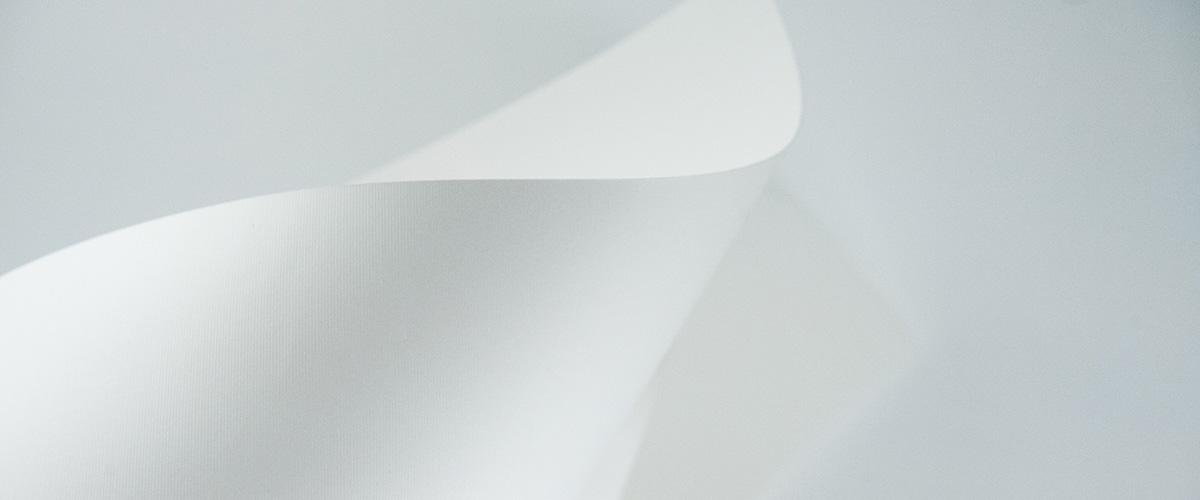Paper Terms
We realize that some paper industry terms and measures may be confusing, so we thought we would provide here a basic glossary of terms, as they relate to our grades:
These are all terms that are used somewhat interchangeably to describe translucent papers like Reich’s CT
Vellum Paper: Vellum is the historical term that refers to an early substrate—an alternative to more expensive papyrus—made from animal hides. Some ancient vellum papers had a semi-transparent quality, and so the term endured through the years, as a descriptor for translucent-like papers. It is still a term sometimes used today to refer to translucent papers like CT.
As a point of some confusion, vellum is also commonly used to describe paper finish for uncoated text and cover papers. So, vellum can refer to either a paper’s translucency, or a paper’s surface feel.
Tracing Paper: Tracing paper is a term more widely used in Europe than in the US, and has traditionally referred to see-through papers used for diagrammatic build ups, for engineering and architecture. Today, tracing paper is still used to describe translucent papers, but these tend to be of lesser quality than CT.
Translucent: “Translucent” is the term most frequently used to describe CT.
Paper Basis Weights: On our site, you will notice that we designate the weights of our papers as either bond, text or cover. Basis weights for CT are bond basis, with the exception of CT Clear Cover 105#; basis weights for AVEO, SAVOY, SHINE and ODEON and either text or cover.
While these weight measurements are standard to the paper industry, they can be the source of some confusion. For that reason, we’ve included a basic comparison of how these three weights equate to one another. (Please note that there are additional basis weight standards for other categories of paper, but this comparison is limited to those weights that apply to Reich Paper products.)
Bond, text, and cover basis weights each use a different sheet size as the standard measurement. A paper’s basis weight equals the actual weight of one ream (500 sheets) of the standard size for that type of paper. Those standard sizes are: bond (17 x 22); text (25 x 38); cover (20 x 26). So, for example, 500 sheets (17 x 22) of a 30# bond paper would weigh 30 pounds.
While there are some instances of basis weight overlap where both weights are commonly used (for example 24# bond and 60 # text), in general paper weights are not used interchangeably.
|
Bond (B) |
Text (T) |
Cover (C) |
GSM |
|
17# |
43# |
24# |
65 |
|
24# |
60# |
33# |
90 |
|
30# |
75# |
41# |
112 |
|
32# |
80# |
44# |
120 |
|
36# |
91# |
50# |
135 |
|
43# |
110# |
60# |
160 |
|
48# |
122# |
67# |
180 |
|
64# |
162# |
89# |
240 |
|
66# |
168# |
92# |
250 |
|
76# |
192# |
105# |
285 |
|
77# |
195# |
107# |
290 |
|
93# |
236# |
129# |
349 |
|
85# |
216# |
118# |
320 |
|
93# |
237# |
130# |
350 |
|
98# |
250# |
137# |
370 |
|
132# |
336# |
184# |
500 |
|
170# |
432# |
236# |
640 |
*Please note that the weights on this chart are provided for comparison only. Since paper weights are calculated from different sheet standards, these are not intended to be considered absolute equivalents, but rather reasonable approximations.
Grain Direction: A paper’s grain direction is a critical factor in folding and binding. For any type of paper (whether specialty, coated, or uncoated), a fold parallel to the grain direction will always be better than one against the grain direction. Likewise, for binding, the binding edge should always be parallel to the sheet’s grain direction.
While printers will often choose to bind paper in a grain-short direction (when that layout produces a better yield from the sheet), we advise against this when using CT, SHINE or ODEON.
Grain direction is determined on the paper machine. As the fibers come together, they align on the web in the same direction that the machine is moving, in a grain-long orientation. Then, when the paper is sheeted from a paper roll, or subsequently cut down from larger sheets, the grain will either run parallel to the long dimension of the sheet (grain long), or to the short dimension (grain short).
As is customary, Reich Paper stock charts list all sheet sizes with the grain direction last. So, a 25 x 38 measurement indicates that the sheet is grain long, while a 35 x 23 dimension indicates grain short.
Acid Free: CT, SHINE, ODEON, and SAVOY are acid-free papers. Acid free denotes paper with pH in the neutral range of 6.5 – 7. (Measures below that range are acidic; above, alkaline.)
Archival: The term acid-free is often, but mistakenly, used interchangeably with the term archival. But archival papers by definition must also contain cotton, hemp or flax, which is not the case with CT, SHINE, or ODEON. Furthermore, since these types of fibers are not options for manufacturing natural translucents, there are no translucent papers that are, in fact, archival (despite any erroneous claims to the contrary.) SAVOY is archival.
 Tree Free Papers
Tree Free Papers Translucent Vellums
Translucent Vellums Digital Printing Papers
Digital Printing Papers Wine Label Papers
Wine Label Papers Lush Felt Textures
Lush Felt Textures Pure, Luxurious Cotton
Pure, Luxurious Cotton Shimmering Metallics
Shimmering Metallics